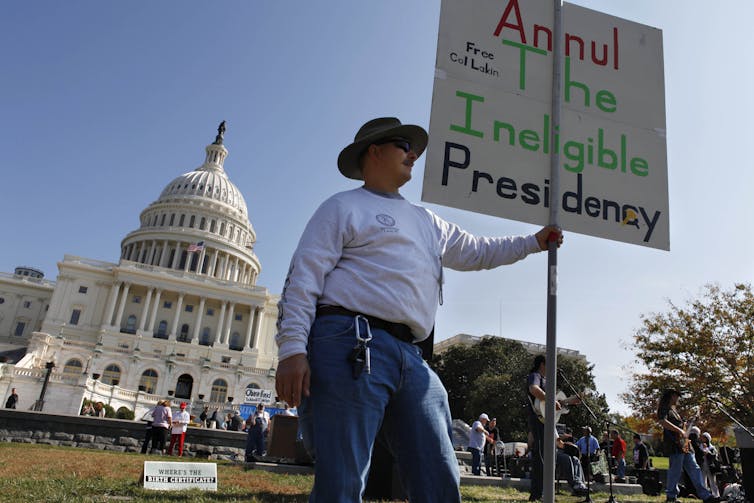Wall Street heavyweights profited as the market melted down in February after getting private warnings from the Trump administration, a new report says
Some heeded the warning and cashed out on bearish positions when markets tanked later that month, The New York Times reported on Wednesday.
On February 24, senior members of President Donald Trump's economic team privately spoke with board members of the Hoover Institution, a research organization at Stanford University, about the risks of a domestic outbreak. One advisor said the White House couldn't yet estimate the effects on the US economy, suggesting to some that the coronavirus could cause significant harm, the report said.
The memo quickly spread throughout the hedge-fund industry just as markets began to grapple with the prospect of a US outbreak.
On February 25, Callanan emailed David Tepper, the Appaloosa Management founder, about the Hoover meetings, highlighting the wariness expressed by the administration officials.
In an interview with CNBC on February 1, Tepper had told investors to be "cautious" until more was known about the virus. Callanan's memo reinforced his bearish stance.
The email spread through Appaloosa and, eventually, to investors outside the firm. Over the next day, at least seven investors across four money-management offices received elements of Callanan's memo, The Times reported.
Many of the investors, equipped with knowledge of the Hoover meetings, adjusted their portfolios accordingly. One told The Times that their reaction was to "short everything," while another said they added to their existing short bets. Some said they even bought up essential goods like toilet paper, reading the memo as a preview of nationwide devastation to come.
The bearish adjustments likely paid off big. The S&P 500 plunged about 4.4% on February 27, the day after the Hoover memo spread from Appaloosa to other investing firms. By the time the benchmark stock index bottomed on March 23, it sat roughly 25% lower from its level on February 27.
Tepper initially denied receiving the memo before telling The Times that while he likely got it, he didn't pay it much attention.
"We were in the information flow on COVID at that point," Tepper said. "Because we were so public about this warning, people were calling us at this time."
He added that Appaloosa held a bearish position on February 23, days before he received Callanan's email.
Wall Street investors knew of private concern about the coronavirus within the Trump administration and used the knowledge to position for the following market plunge, The New York Times reported on Wednesday.
A memo from the hedge-fund consultant William Callanan described White House officials' wariness, expressed in meetings in late February, about a US outbreak. Meanwhile, the officials publicly allayed concerns about the coronavirus.Callanan sent the note to David Tepper, the founder of Appaloosa Management, on February 26. The memo spread throughout the firm and to investors at other offices.Some recipients adjusted their portfolios accordingly, viewing the US officials' private statements as a warning of devastation to come, The Times reported.
The S&P 500 plummeted 4.4% on February 27, and by March 23 it sat roughly 25% lower than the day Tepper received the memo.
A February memo shared among Wall Street's elite detailed the Trump administration's private concerns about the coronavirus pandemic.
Some heeded the warning and cashed out on bearish positions when markets tanked later that month, The New York Times reported on Wednesday.
On February 24, senior members of President Donald Trump's economic team privately spoke with board members of the Hoover Institution, a research organization at Stanford University, about the risks of a domestic outbreak. One advisor said the White House couldn't yet estimate the effects on the US economy, suggesting to some that the coronavirus could cause significant harm, the report said.
But administration officials publicly allayed fears that the virus would slam the US. The next day, Larry Kudlow, the director of the National Economic Council, said the nation was "pretty close to airtight," despite privately telling the Hoover board that "we just don't know" how contained the virus was, The Times said.
William Callanan, a hedge-fund consultant and member of the Hoover board, wrote in a memo at the time that almost every administration official addressed the virus "as a point of concern, totally unprovoked," according to The Times.
The memo quickly spread throughout the hedge-fund industry just as markets began to grapple with the prospect of a US outbreak.
On February 25, Callanan emailed David Tepper, the Appaloosa Management founder, about the Hoover meetings, highlighting the wariness expressed by the administration officials.
In an interview with CNBC on February 1, Tepper had told investors to be "cautious" until more was known about the virus. Callanan's memo reinforced his bearish stance.
The email spread through Appaloosa and, eventually, to investors outside the firm. Over the next day, at least seven investors across four money-management offices received elements of Callanan's memo, The Times reported.
Many of the investors, equipped with knowledge of the Hoover meetings, adjusted their portfolios accordingly. One told The Times that their reaction was to "short everything," while another said they added to their existing short bets. Some said they even bought up essential goods like toilet paper, reading the memo as a preview of nationwide devastation to come.
The bearish adjustments likely paid off big. The S&P 500 plunged about 4.4% on February 27, the day after the Hoover memo spread from Appaloosa to other investing firms. By the time the benchmark stock index bottomed on March 23, it sat roughly 25% lower from its level on February 27.
Tepper initially denied receiving the memo before telling The Times that while he likely got it, he didn't pay it much attention.
"We were in the information flow on COVID at that point," Tepper said. "Because we were so public about this warning, people were calling us at this time."
He added that Appaloosa held a bearish position on February 23, days before he received Callanan's email.











 © Provided by The Canadian Press
© Provided by The Canadian Press












